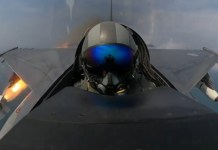With the recent revelations of the North Korean submarines capable of launching ballistic missiles, the US Army has installed new and improved early warning systems in South Korea capable of detecting any misadventure from Pyongyang and keeping an eye on its missile program.
Were Haiti, Lebanon & Now Turkey Subjected To A Man-Made Earthquake Via HAARP Technology?
According to the reports, the US Army has deployed the enhanced Joint Tactical Ground Station (JTAGS) capabilities in South Korea, advancing battlespace awareness and monitoring in the region.
It also established a new and modernized operations center.
The deployment is part of the JTAGS modernization program taken with the defense giant Northrop Grumman, to enhance the capabilities of a system that started fielding in the late 1990s to provide comprehensive early warning and awareness solutions and keeping an eye on Pyongyang and Beijing.

“This is a tremendous milestone in our decades-long mission of delivering missile warning and defense capabilities to protect our joint warfighters and allies,” said Kenn Todorov, vice president and general manager, combat systems and mission readiness, Northrop Grumman. “JTAGS is vital to warfighters and of growing importance as we create true Joint All-Domain Command and Control systems, especially as we find new ways to integrate and leverage space-based assets.”
According to the company, the JTAGS receives and processes data directly down-linked from the Overhead Persistent Infrared (OPIR) constellation of satellites, including the Defense Support Program and Space-Based Infrared System (SBIRS) sensors, and other infrared satellite sensors.
JTAGS then disseminates near-real-time warning, alerting, and cueing information on ballistic missile launches and other tactical events of interest throughout the theater using multiple communications networks.
Northrop Grumman, along with the US Army, has also installed and upgraded the JTAGS systems and deployed the Block-II versions in permanent facilities in Japan, Qatar, and Italy. These radars are essential and would be able to detect missile launches, aircraft taking off, and other fields related to the airspace.




